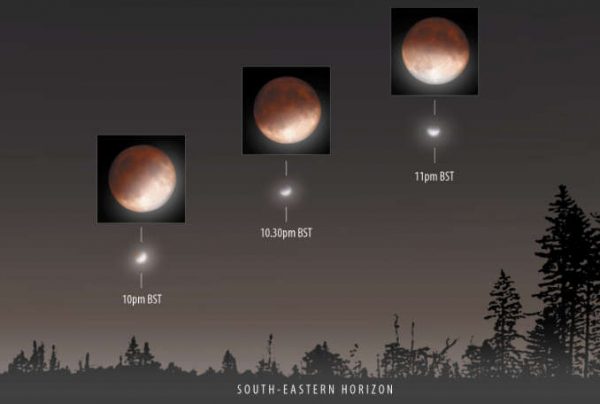Don’t miss Tuesday night’s partial lunar eclipse – Astronomy Now – Astronomy Now Online
A partial eclipse of the Moon will be visible from across the UK on the evening of 16/17 July, with the Moon rising already partially immersed in Earth’s deep umbral shadow. You’ll need to find an observing site with an uninterrupted south-eastern outlook, but a humble pair of binoculars is the only piece of equipment necessary to enhance your enjoyment of the event. The eclipse will also be seen across a large part of Asia, the whole of Africa, the eastern part of South America, and the western part of Australia.

The Moon rises at around 9pm BST (20:00 UT ) and as it climbs slowly clear of the murky south-eastern horizon it shouldn’t be too difficult to spot an increasing fraction of its disc becoming darkened behind the curved shadow of the Earth. How clearly defined the lunar features covered by Earth’s shadow and the edge of the shadow itself appear during the eclipse depends on local sky conditions. Make sure you have a pair of binoculars with you.
For this eclipse, 65.3 per cent of the Moon’s diameter will be covered in deep shadow at the time of greatest eclipse. This occurs at 10.30pm BST (from London), by which time the Moon has hauled itself about eight degrees clear of the horizon. The end of the umbral phase of the eclipse occurs at midnight (BST), with the Moon at an altitude of around 15 degrees.
The final chapter of this eclipse features the very subtle penumbral phase, when our satellite has moved wholly out of Earth’s deep umbral shadow. The penumbral phases of an eclipse are never easy to see, and with the Moon hanging relatively low over the south-eastern horizon, you’ll need pristine local sky conditions to see the ill-defined edge of Earth’s outer shadow steadily retreating across the lunar disc. The end of the penumbral phase at 1.17am BST signals the end of the eclipse.





